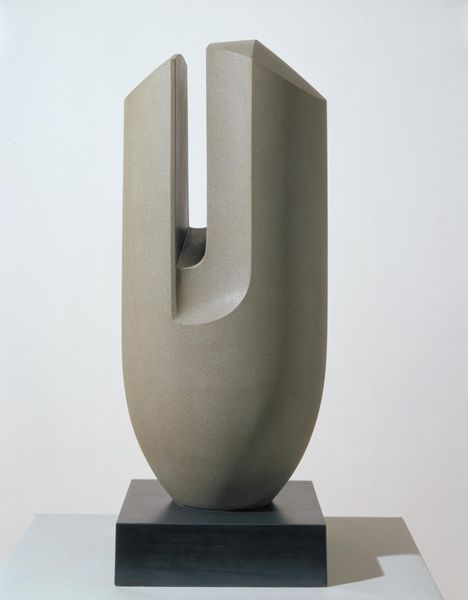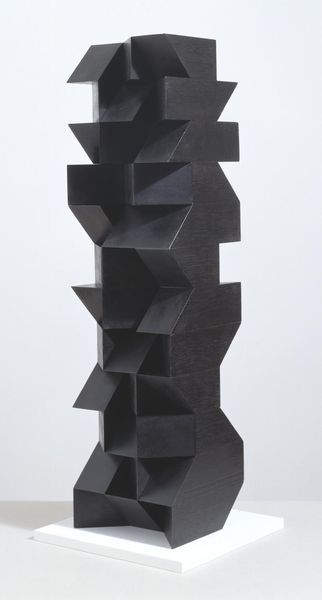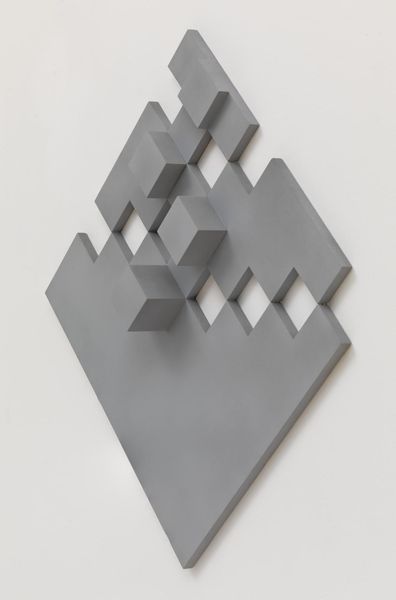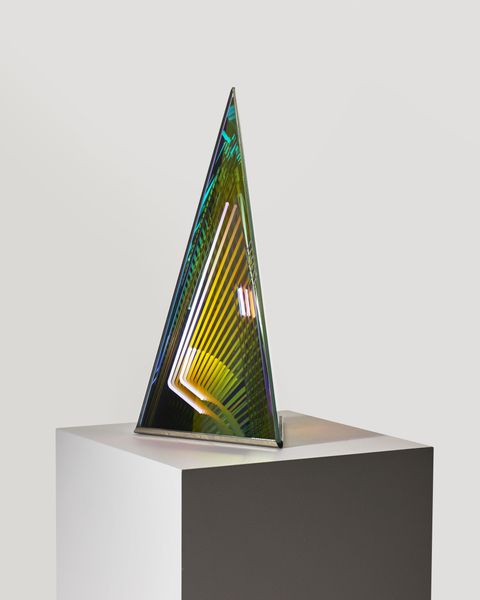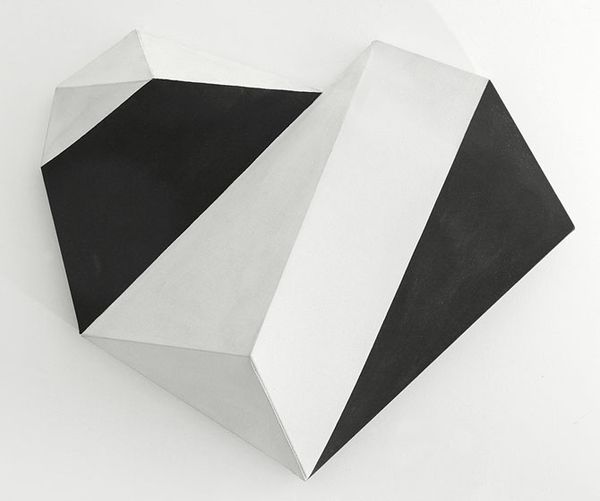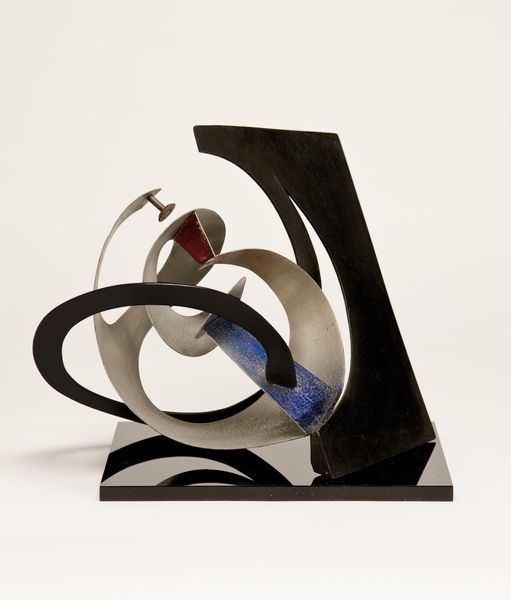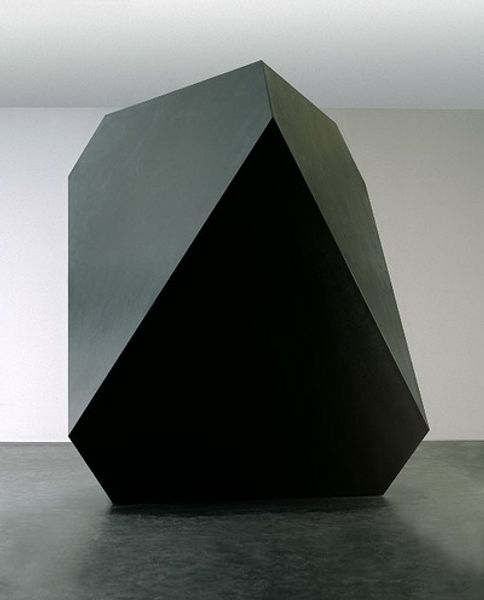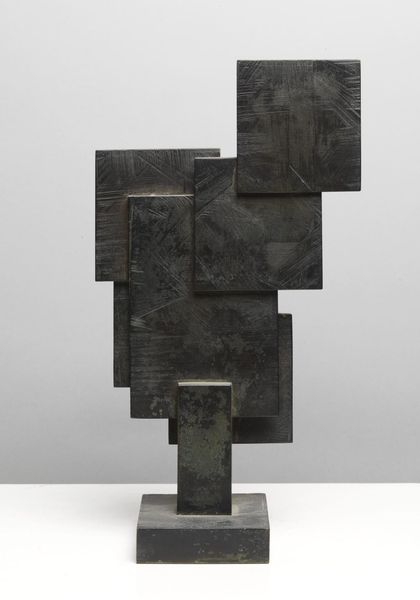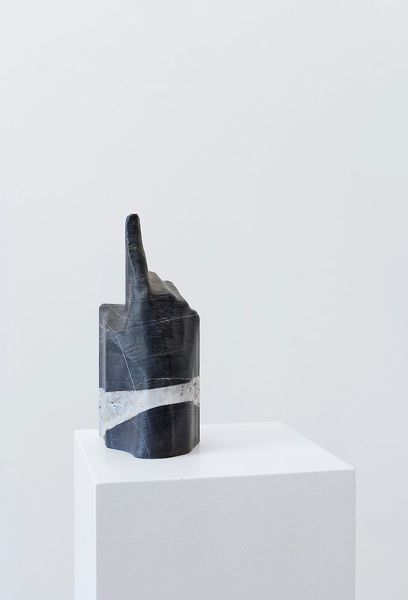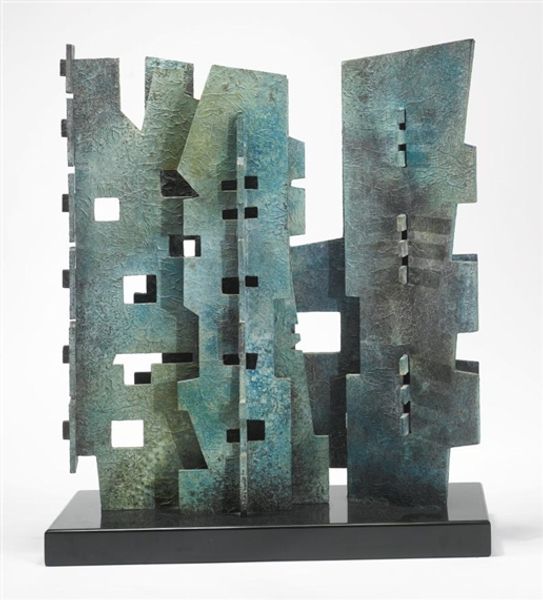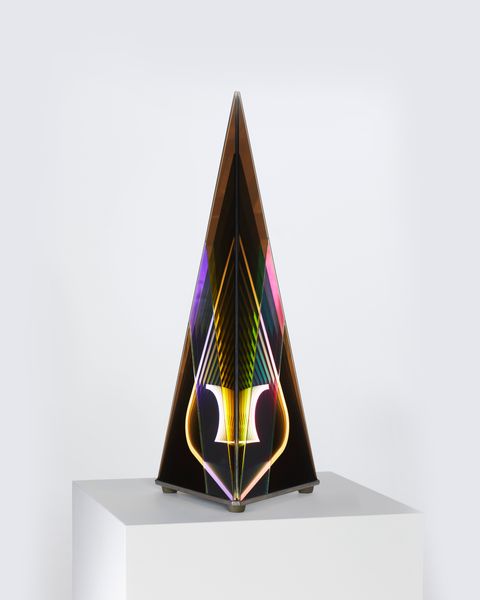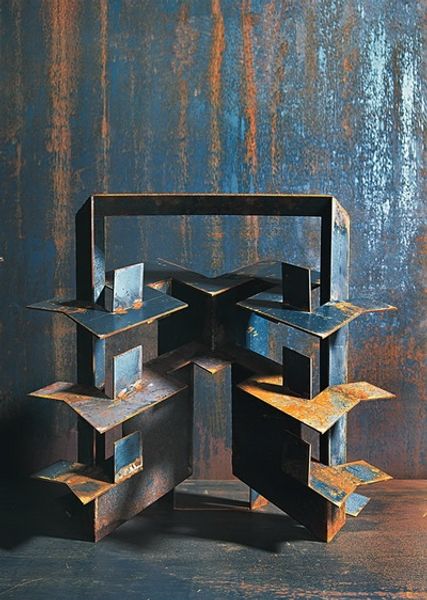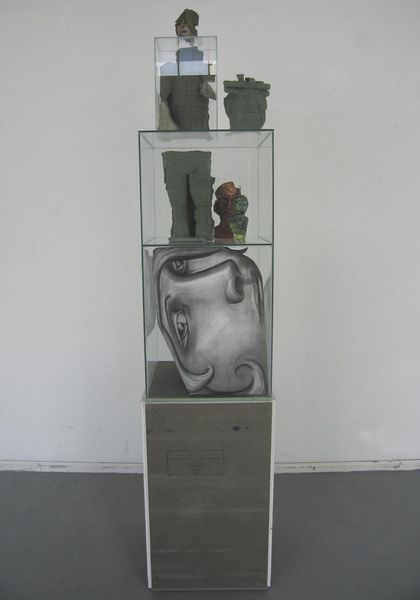
metal, sculpture
#
metal
#
sculpture
#
geometric
#
sculpture
#
abstraction
Copyright: Ramirez Villamizar,Fair Use
Curator: It's hard not to immediately appreciate the heft of this sculpture. The density, the shadows... what are your initial thoughts? Editor: Definitely a formidable object. Visually, it strikes me as brutal and solid, a monument born from industry. I immediately key into the material – clearly some kind of metal – and the labor involved in shaping these angular forms. Curator: Exactly! Let's delve a little deeper. This piece is entitled "Aerolito #2" and it was created in 1992 by the Colombian artist, Ramirez Villamizar. Villamizar was a key figure in the development of geometric abstraction in Latin America. Editor: So, while the title hints at something celestial, the reality of its construction keeps it firmly grounded. It looks like it was made with thick iron bars. I'm also wondering about the availability of the raw materials to him as an artist during that period in Columbia, and if that dictated the work. Curator: That’s insightful. We could view the material choices here in connection to industrial development in Latin America during that era. Villamizar's work often reflected broader political and societal changes of that period, like a commentary on industrial expansion. His embrace of abstraction provided a language to speak about progress. Editor: It seems like progress measured in right angles and weighty substance. How did institutions or collectors respond to this marriage of hard materials and abstract form? Curator: His approach found favor amongst various groups. Art critics saw it as an elegant progression of abstract idioms, and it attracted considerable institutional support. These geometric forms came to symbolize modernization and rationality which matched the ambitions of a quickly transforming Latin America. Editor: Fascinating, this piece feels like the antithesis of airy and lightweight, even if it references space. The means of production, from extraction to assembly, leave a distinct impression. Curator: Yes, a tangible, imposing counterpoint! Understanding both the hands-on construction and social implications of "Aerolito #2" reveals a captivating contrast. Editor: Indeed, the raw materials provide us with a starting point into how this art existed within society, labor, and material progress at the time.
Comments
No comments
Be the first to comment and join the conversation on the ultimate creative platform.
